A clogged pool pump impeller will cause issues with the filter pressure and water flow. It only takes a small amount of debris to block up the impeller and stop it from working properly. Luckily, cleaning the impeller out is something you can do at home.
In this article, I will show you two ways to clean and unclog a pump impeller.
Article Contents
Signs the Impeller is Clogged
Before we jump into the step-by-step guide, let’s look at some common symptoms and signs of a blocked impeller. So you don’t waste time cleaning the impeller when it doesn’t need cleaning.
1. Low Filter Pressure
A lower than normal filter pressure is one sign that your pool pump impeller is clogged up. The pressure gauge should show a similar reading from day-to-day when your pump is on. It’s normal for it to get higher over time.
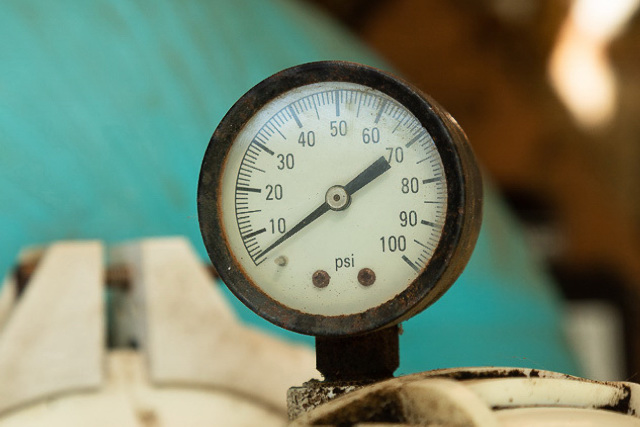
If, on the other hand, you notice a sudden drop in pressure, this can indicate a blocked or clogged impeller. Low pressure means the pump is not outputting the same amount of water.
Keep in mind, a blocked impeller isn’t the only cause of low pressure. It can be closed valves, a blocked line, or full skimmer basket too.
Further reading: How To Fix Low or No Pressure In Pool Filter Quickly
2. Pump Motor Laboring or Sounds Strained
If you’ve owned your pool for a while, you should have a pretty good idea of how the pool pump sounds when it’s operating correctly.
If you notice the pump is noisier than normal, making noises or just doesn’t sound right, this indicates a possible blocked pump impeller.
Again, it’s not the only reason your pump may be making noises but it is likely the impeller could be clogged up.
Further Reading: Why Your Pool Pump is Noisy and How to Fix It (Quiet it)
3. Automatic Pool Cleaner Moving Slow
Automatic pool cleaners require a certain level of pressure to operate correctly. This pressure comes from the pool pump. If the pump impeller is clogged or not working well, the reduced pressure will mean the pool cleaner will move slowly or, in some cases, not at all.
4. Low Flow Out of Return Jets
Low flow out of the return jets is another sign your impeller is clogged. You’ll notice that the pressure gauge on the filter is lower too.
The Reason Pool Pump Impellers Clog Up
With leaves, dirt, bugs, gravel, pine needles, grass clippings, seeds and many other types of debris landing in your pool, the impeller can clog up easily.
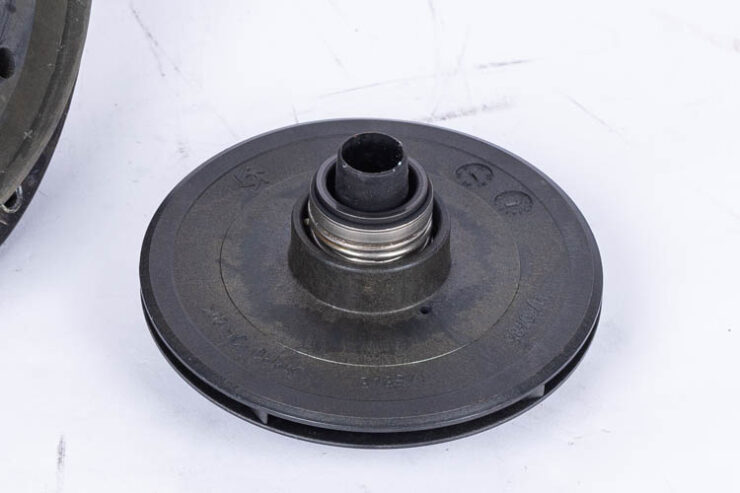
The first line of protection against a clogged impeller is the skimmer basket. It keeps the large debris out of the pump. But if it’s cracked, debris can slip through. The pump also has a basket to keep debris out of the impeller.
With both of these baskets, they can crack allowing debris through. Often, small slip through, even if there are no cracks, and lodge in the impeller. Whilst a small amount of debris isn’t an issue for the impeller, if it builds up over time, it can clog it up and stop the pump from operating correctly.
How to Fix a Clogged Pool Pump Impeller
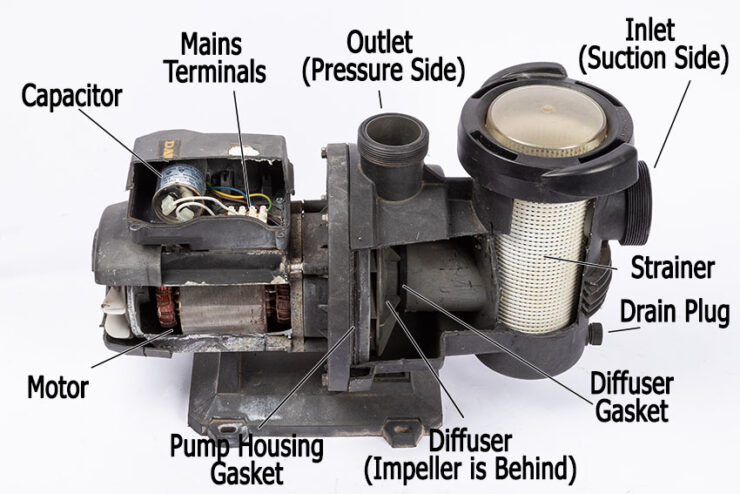
Method 1 – Use a Screwdriver or Wire Coat Hanger to Unblock Impeller
This is the quickest way to unblock and clean out an impeller. It works most of the time and should be tried first.
Step 1) Switch off the pump at the breaker.
Step 2) Open the pump lid and remove the strainer basket.
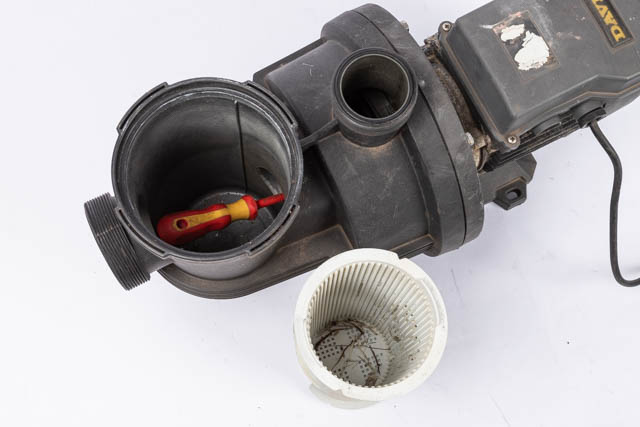
Step 3) Using a screwdriver, reach into the pump housing and poke the screwdriver into the hole where the impeller is. Scrape and move the screwdriver in and out to pull out the debris. You can get your fingers in there too.
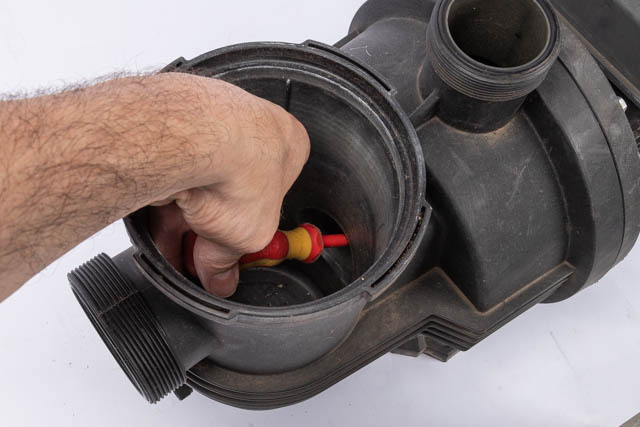
Another method is to use a coat hanger with a hook. You’ll need to first straighten out a wire coat hanger. Then bend the coat hanger with pliers to make a small hook (about an inch) at one end. Poke the hook in and out of the hole to pull debris out.
Method 2 – Open the Pump Housing to Clean the Impeller
This method is much more involved and should only be done if you can’t clear the clog the other way.
Step 1) Switch off the pump at the breaker.
Step 2) Open the pump lid and remove the strainer basket.
Step 3) Separate the Pump Housing from the Motor
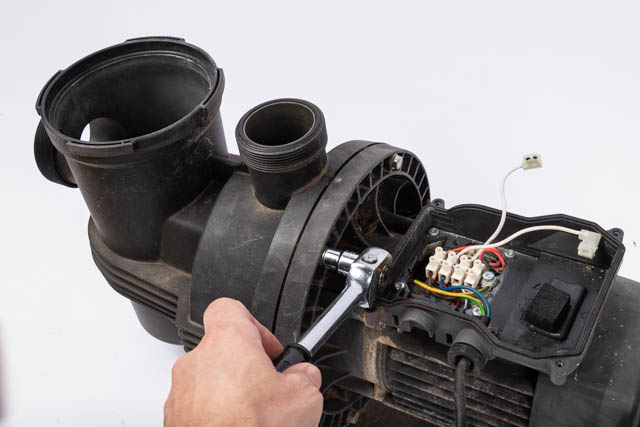
Start by undoing the bolts or screws holding the pump housing together. Some pumps will have a band clamp around the outside of the pump.
Now you should be able to pry apart the two halves of the pump. You may need to give the pump housing a tap with a mallet or use a screwdriver to help separate the two parts. Be careful not to damage the housing.
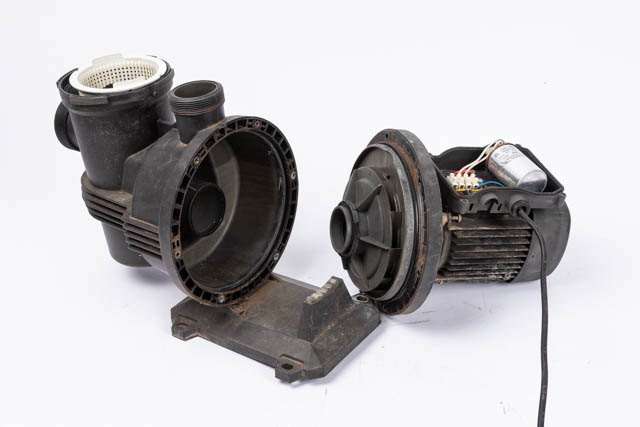
Step 4) Remove the Diffuser (Volutes)
To get to the impeller, the diffuser (aka Volutes) needs to be removed. It will either pull off or have some screws holding it to the motor. Once that is off, you can now see the impeller.
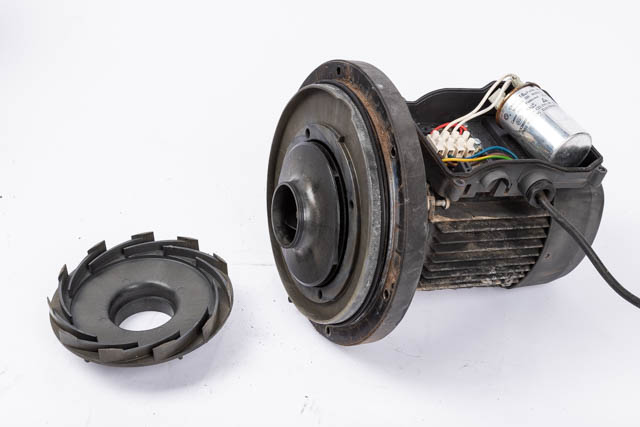
Step 5) Clean and Inspect Impeller
With the diffuser off, you now have access to the impeller. Pull all the debris that is caught on it. It’s also a good idea to inspect it for cracks and damage.
If you’re unable to remove the debris this way, you can remove the impeller.
Step 6) Reassemble the Pump
Reassembly is the opposite procedure. Start by replacing the diffuser and screwing it back on if it had screws.
Inspect the diffuser seal whilst you’re here. You may want to replace it. In any case, use some Teflon or silicon-based seal lube on it to increase its life, and to create a better seal.
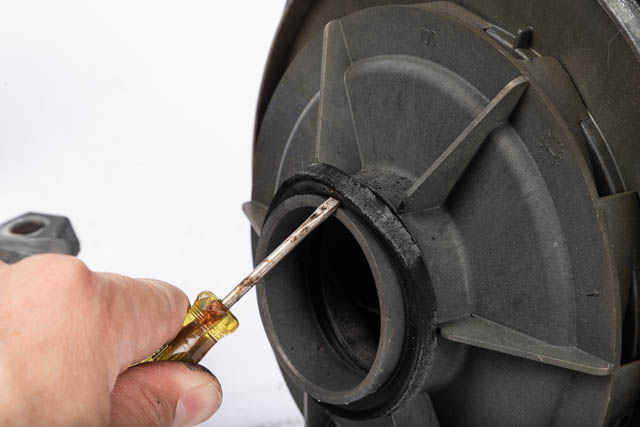
You’ll also want to inspect the pump housing seal too. Take it out, clean out the groove it sits in and clean the mating surfaces of the pump. It is usually a good idea to replace the housing gasket anyway.
Make sure you use lots of seal lubricant on the o-ring too.
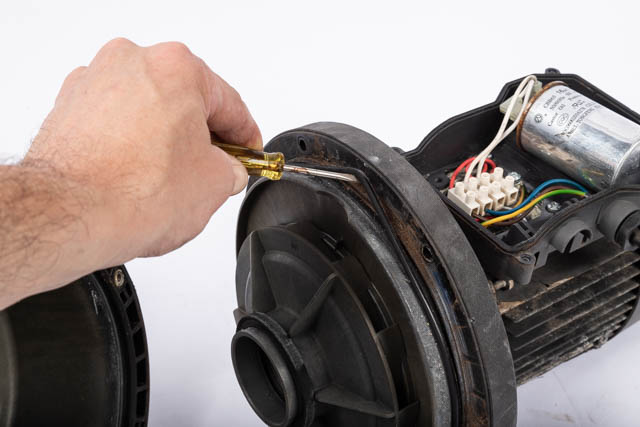
Now you can fit the two halves of the pump back together. Make sure they align correctly and the o-ring around the housing is in the correct place. Tighten up the bolts evenly.
Step 7) Prime the Pump and Test
With the pump back together, put the strainer basket back in and tip some pool water into the pump to prime it. Put the lid on and switch it back on.
Your pump should be running well now. It’s a good idea to check for leaks too. Since you just opened it. If you notice any leaks, you’ll need to open the pump back up and check you’ve used the correct seals and have located them correctly. You may need to replace the seals too.
Tips to Prevent Impeller Clogs
If you follow these tips, you’ll lower the chances of a clogged up impeller.
- Clean out the skimmer basket weekly
- Clean out the pump basket weekly
- Inspect the skimmer and pump basket weekly for cracks
- Use a pool cover
- Skim and vacuum your pool regularly (so it’s clean)
- Use a skimmer sock to prevent small debris from entering the pump
You may need to do these tasks more often if you have a lot of trees around your pool.
Further Reading: What is a Pool Skimmer Sock, and Do You Need One?
When & How Often to Clean the Impeller
Provided that you regularly clean out the pump strainer basket and skimmer baskets, cleaning the impeller at a set interval is unnecessary.
The impeller only needs cleaning if there is a problem with the water flow and pressure. Or you notice the pump isn’t performing at 100%.

